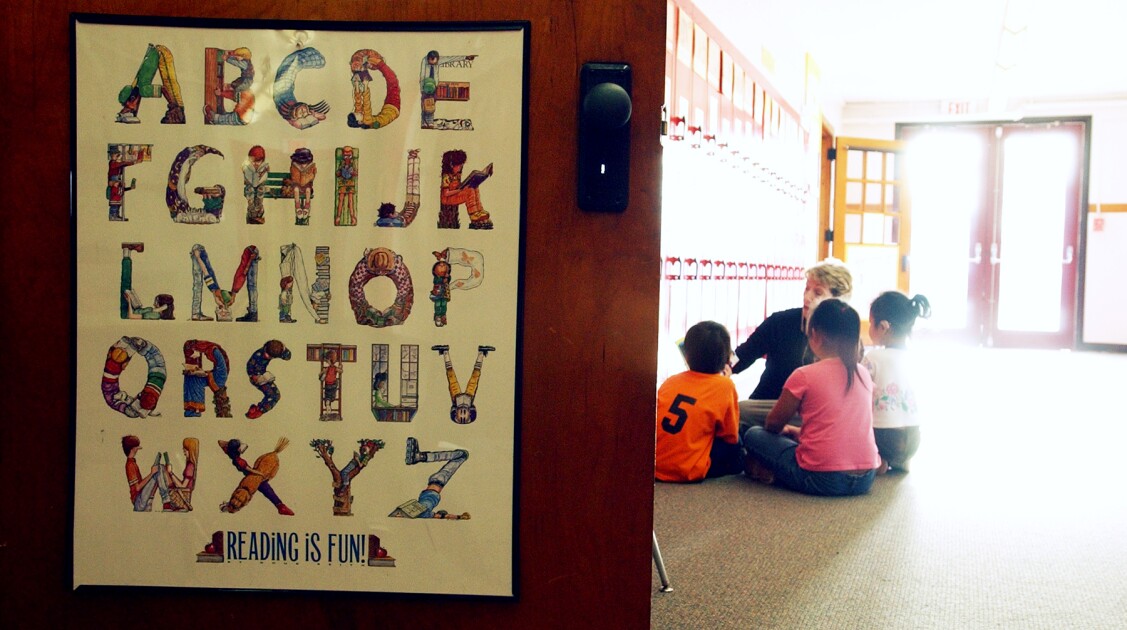Includes updates and/or revisions.
Although this was supposed to be the “year of education” in California, Gov. Arnold Schwarzenegger presented a much less ambitious agenda for public schools during his 2008 State of the State address last week than he had been vowing to pursue last year.
With the state facing a $14 billion budget deficit in fiscal 2009, the second-term Republican instead introduced a new slogan, calling 2008 “not the year to talk about money.”
Recounting the state’s response to residents affected by last year’s Southern California wildfires and the rapid rebuilding of a section of a San Francisco Bay Area freeway after a truck crash, the governor emphasized accomplishments over the past year.
“Government can work, it can be efficient, it can lead,” he said.
But no mention was made of “Getting Down to Facts,” the massive research report released in 2007 that called for a major overhaul of the state’s education finance and governance systems. (“California’s Schooling Is ‘Broken,’” Mar. 21, 2007.)
Neither did Gov. Schwarzenegger make any statements about the recently completed recommendations of his own Committee on Education Excellence on how to address the issues raised in the report.
That committee’s report recommends a range of changes, including performance pay for teachers, new models for certifying teachers, an expansion of full-day kindergarten, reducing regulations, and creating a commission in charge of deciding on the best use of the information collected on students and teachers.
The governor “absolutely let the opportunity drop,” said David N. Plank, the executive director of Policy Analysis for California Education, a think tank based at the University of California, Berkeley. “This was the moment that the state was expecting him to set a course for the year.”
Others urged Mr. Schwarzenegger not to back off from his earlier commitment to focus on education reform this year.
“Rather than avoiding talking about money, this year’s bleak fiscal outlook provides an excellent opportunity to take a long-term view,” said a statement from Parents and Students for Great Schools, a coalition of advocacy groups representing many low-income families in the state.
See other stories on education issues in California. See data on California’s public school system.
Using a familiar refrain, the governor said the state has a “spending problem” dictated by automatic budget formulas that trigger increases in spending even when revenues are less than expected. He said that, in November, he would once again push for a constitutional amendment that would give the legislature and the governor flexibility over spending decisions when revenues are flat. His proposed Budget Stabilization Act, he said, would set aside money in surplus years to help in lean times.
“We now have no way out but to face our budget demons,” he said. The governor presented his fiscal 2009 budget Jan. 10; the state’s fiscal 2008 budget was $145 billion.
Schools in Crisis
Almost the only education proposal Mr. Schwarzenegger addressed during his Jan. 8 speech was his plan to intervene in the 98 school districts that face sanctions under the federal No Child Left Behind Act because they haven’t met achievement targets for multiple years.
“No more waiting,” he said. “We must act on behalf of the children.”
Districts will fall under different assistance plans that best fit their needs—from making modifications to local education plans intended to help them meet NCLB, to the more drastic steps of replacing personnel, revising curricula, or restructuring the districts.
Additional materials from the governor’s office show that he is proposing a plan that would respond to one of the issues raised in “Getting Down to Facts”—what the report termed the state’s “compliance-driven” education bureaucracy. Under his plan, high-performing schools and districts would be allowed to request waivers from some provisions in the state education code as long as they continued to meet expectations.
The governor also plans to take some action on one of the critical areas raised in “Getting Down to Facts”: the need for a more coherent data system to allow for more-informed decisions about student achievement.
He is proposing both to pay for and link the state’s teacher and student databanks, which Trish Williams, the executive director of EdSource, a Mountain View, Calif.-based research group, called his “single most important recommendation.”
Following one of the recommendations from the Committee on Education Excellence, the governor will also create a nine-member Education Data Commission to make policy recommendations on the use of education data.
In the area of teaching, Gov. Schwarzenegger is proposing to let other public and private entities enter the teacher-preparation market and create “new routes to a teaching credential” separate from the state’s university systems.
“We’ve got to create 100,000 more teachers in the next 10 years,” he said.
Even though the governor said he would be presenting a budget that is “difficult,” some observers are doing their best to focus on the positive elements.
“California’s newest fiscal crisis has hit the state’s public school advocates hard, but they’re not turning in the towel,” Ms. Williams said. “The information a comprehensive education data system can provide will enable California to evaluate the effectiveness of everything else we are doing to improve school performance and student achievement.”
State Superintendent of Public Instruction Jack O’Connell, who will present his own State of Education address later this month, said in a statement that he was pleased with the governor’s recommendations regarding data, and that he welcomes his proposals for increasing the supply of teachers.







